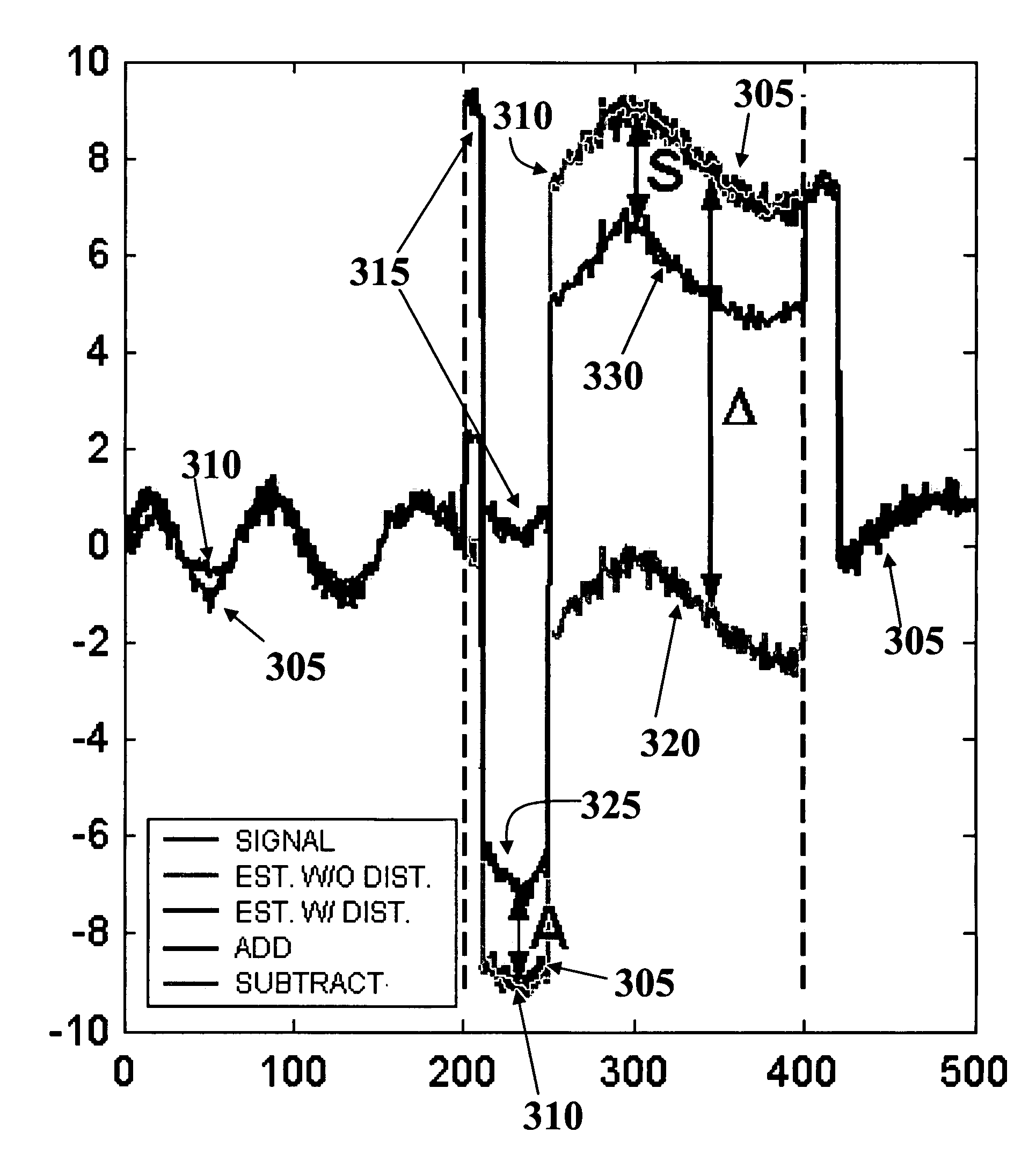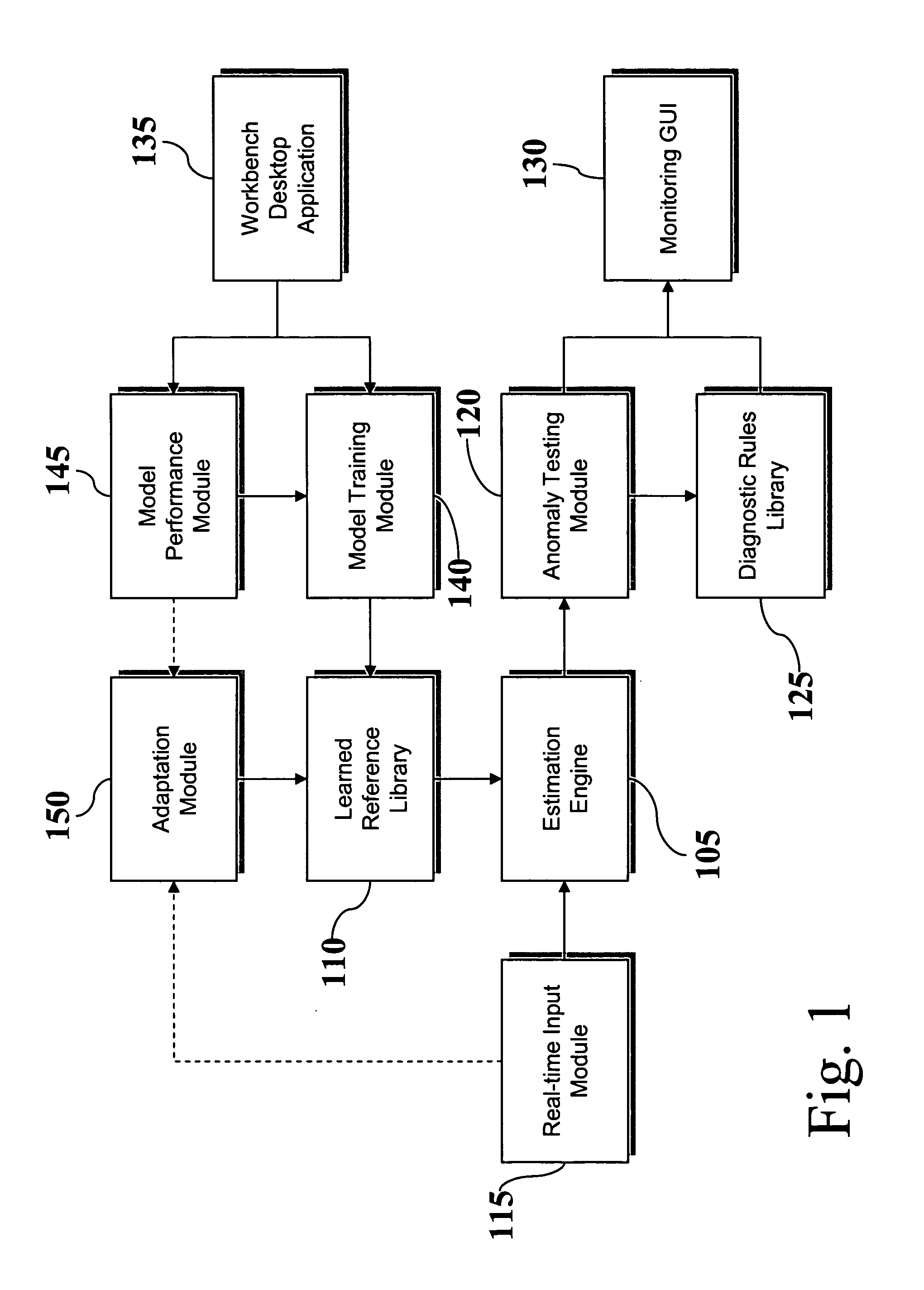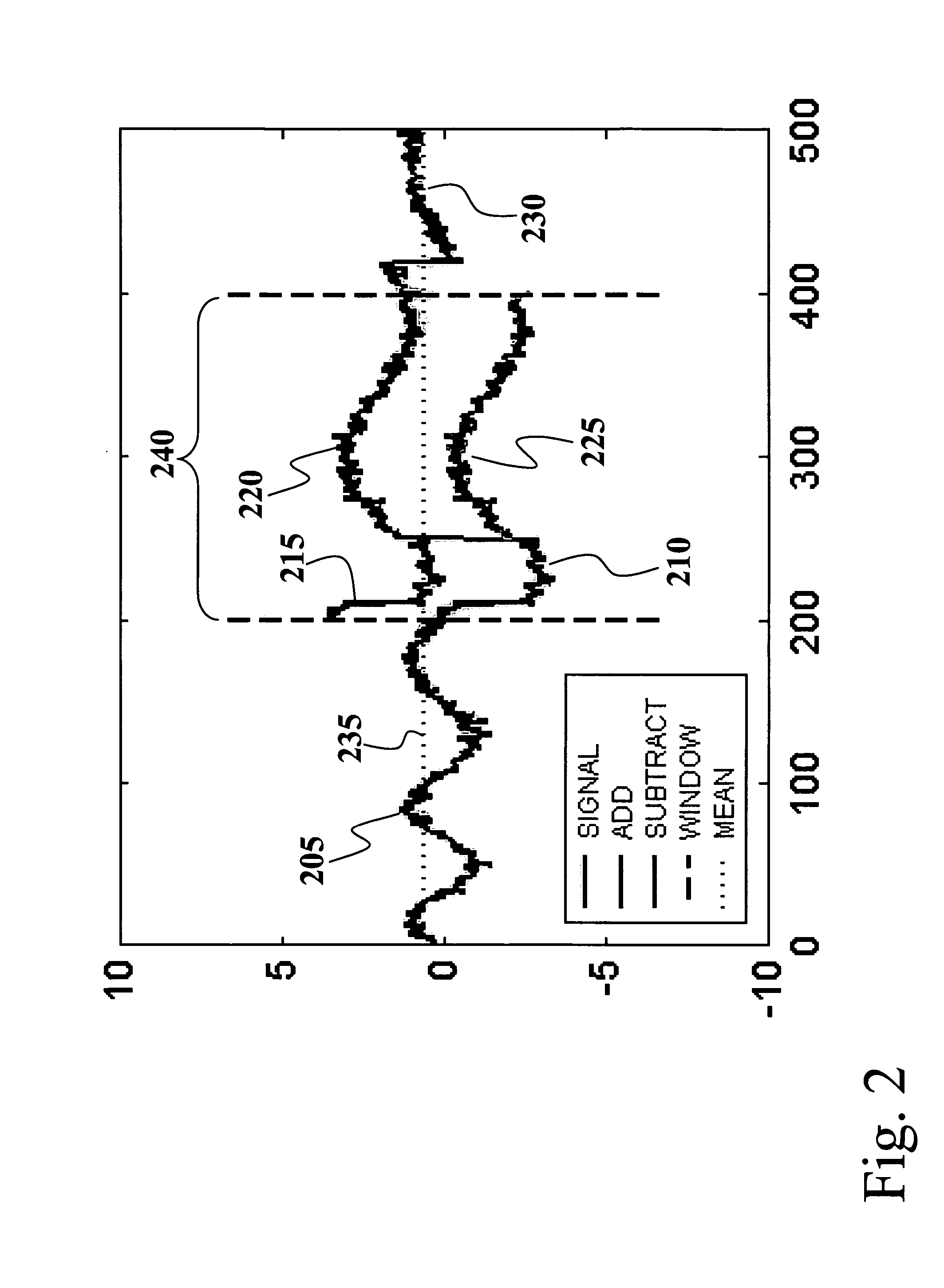Automated model configuration and deployment system for equipment health monitoring
a technology of automatic model configuration and equipment health monitoring, applied in the direction of testing/monitoring control systems, process and machine control, instruments, etc., can solve the problems of not providing as much efficacy for equipment health monitoring, prone to trial and error in creating properly functioning models, and requiring significant development and deployment of equipment models, etc., to achieve a highly scalable system and ease the burden on system engineers
- Summary
- Abstract
- Description
- Claims
- Application Information
AI Technical Summary
Benefits of technology
Problems solved by technology
Method used
Image
Examples
Embodiment Construction
[0014]An equipment health monitoring system according to the invention is shown in FIG. 1 to comprise an estimation engine 105 at its core, which generates estimates based on a model comprising a learned reference library 110 of observations, in response to receiving a new input observation (comprising readings from multiple sensors) via real-time input module 115. An anomaly-testing module 120 compares the inputs to the estimates from estimation engine 105, and is preferably disposed to perform statistical hypothesis tests on the series of such comparisons to detect anomalies between the model prediction and the actual sensor values from a monitored piece of equipment. A diagnostic rules library 125 is provided to interpret the anomaly patterns, and both the anomaly-testing module 120 and the diagnostic rules library 125 provide informational output to a monitoring graphical user interface (GUI) 130, which alerts humans to developing equipment problems.
[0015]Separately, a workbench...
PUM
 Login to View More
Login to View More Abstract
Description
Claims
Application Information
 Login to View More
Login to View More - R&D
- Intellectual Property
- Life Sciences
- Materials
- Tech Scout
- Unparalleled Data Quality
- Higher Quality Content
- 60% Fewer Hallucinations
Browse by: Latest US Patents, China's latest patents, Technical Efficacy Thesaurus, Application Domain, Technology Topic, Popular Technical Reports.
© 2025 PatSnap. All rights reserved.Legal|Privacy policy|Modern Slavery Act Transparency Statement|Sitemap|About US| Contact US: help@patsnap.com



